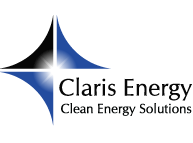 Whether you are a constructor or an investor in energy efficient projects, finding a reliable source of funding is one of the keys to completing quality developments and expanding your scope of green activities.
Whether you are a constructor or an investor in energy efficient projects, finding a reliable source of funding is one of the keys to completing quality developments and expanding your scope of green activities.
You can rely on several possibilities for the execution of energy efficient improvements or the construction of such buildings. The following overview will give you a better idea about some of the most commonly used funding options.
Tax Deductions
The 179D incentive is one of the possibilities that companies and investors interested in green projects can rely on.
The 179D tax incentive expired recently but there are chances it will be extended. The Senate Finance Committee approved the extension of various provisions like the 179D incentive under the Expiring Provisions Improvement Reform and Efficiency (EXPIRE).
This provision will provide the 179D incentive for improvements to heating and cooling, interior lighting, building envelope and the addition of energy efficient water heating systems to the building.
Apart from potentially extending a number of important provisions, EXPIRE has also introduced several modifications to deductions like the 179D incentive. Non-profit organizations have the ability to transfer this kind of deduction to the designer or the architect responsible for the project. Until present, such a possibility was available exclusively for public building construction and modification.
Several Institutions to Work with
Several institutions in the US are interested in the execution of green projects and as a result, these institutions work with investors and provide funding.
The Office of Energy Efficiency and Renewable Energy (EERE) is one of these institutions. A range of financial opportunities are presented at the office’s website. There is a lot of information about the EERE exchange system, as well as about the application criteria.
Federal grants are also available for investors in green projects. The United States Department of Labor Employment and Trading Administration’s website has a list of grants available for 2014, with some of these funding options being provided for energy efficiency projects and improvements.
State Incentives
Investors can also look for financial incentives provided by individual states. The Database of State Incentives for Renewables and Efficiency (DSIRE) has the most comprehensive list of funding provided in each of the states.
DSIRE was established in 1995 and it provides summaries of incentives and programs established by individual federal governments. Possibilities provided by US territories, state governments and local governments are also listed in the database.
Currently, the portal is undergoing some staff changes, which means that it gets updates less frequently. Nevertheless, there are some interesting opportunities listed and individuals or companies interested in the execution of green projects will certainly benefit from the information.
Doing some planning before getting started with your project and calculating the amount of money you will need for its execution will make it a lot easier to pick the right funding source. Funding for such projects is available on both national and local level, if you are patient enough in terms of doing research and you know how to apply for programs, tax incentives and deductions.
Steve Nanos
Latest posts by Steve Nanos (see all)
- LED Lighting – A Great EPAct 179D Qualification Possibility - February 3, 2015
- 45L Credit Requirements for Begun Constructions - January 29, 2015
- Can Section 179D Incentives Help Businesses Save a Lot of Money? - January 27, 2015

 609.275.8484
609.275.8484